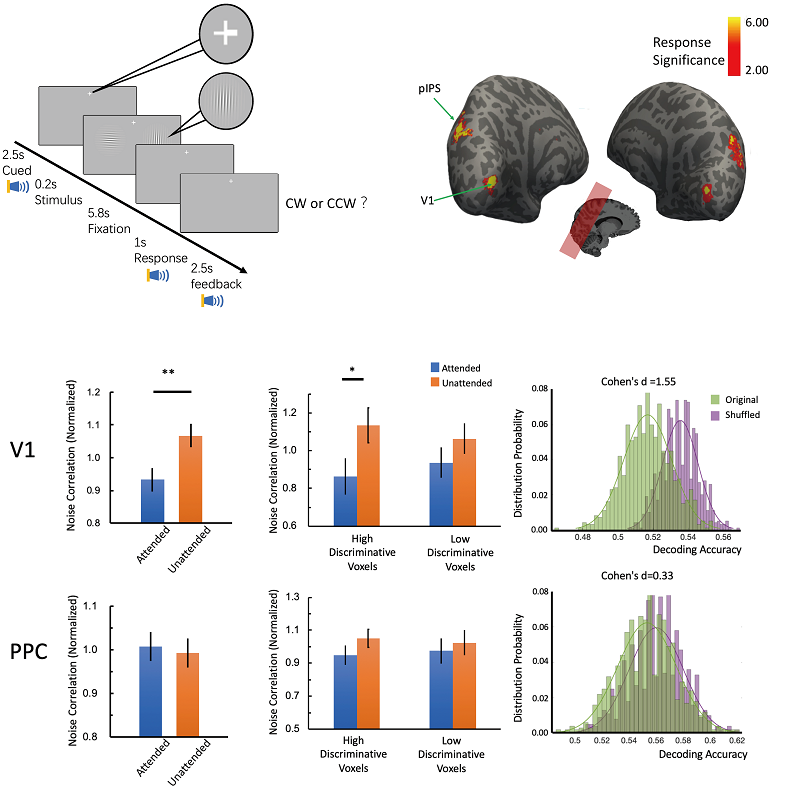Researchers from Institute of Biophysics Reveal the Mechanism of Attentional Modulation of Neural Response Covariability in Human Brain
A fundamental goal of cognitive neuroscience is to understand how information is encoded and the mechanisms that improve the encoding efficiency in the brain. Regulating the response covariability in the neuron population could significantly improve encoding efficiency, and attentional enhancement of perceptual sensitivity could be achieved through the covariability modulation. However, the human brain is a hierarchical neural system, it is unclear how attention modulates neural response covariability in different functional regions. Furthermore, the neural pathway that regulates such covariability modulation is also unknown.
To answer these questions, Drs. HE Sheng, ZHANG Jiedong, and JIANG Yong from the State Key Lab of Brain and Cognitive Science at Institute of Biophysics (IBP) used ultra-high field magnetic resonance imaging (7T MRI) to obtain high-resolution functional signals from the human visual cortex under different attentional states. Their findings reveal the effects of attentional modulation on the covariability of neural responses and related computational principles.
The study was published online in the Proceedings of the National Academy of Sciences on Oct. 9.
The study found reliable neural encoding of experimental stimuli in both the primary (V1) and the higher visual cortex (posterior parietal cortex, PPC). However, attentional modulation of neural response covariability was only observed in V1 but not in PPC. Through further analysis, the researchers found that the contribution of covariability to the information encoding was different in the two regions. In primary visual cortex V1, computationally removing the covariation in the neural activity significantly increased the efficiency of information encoding, but in high-level visual cortex PPC, the same manipulation had almost no effect on information encoding. This explains why attention regulates neural responses differently in the two regions.
To further clarify the relationship between response covariability and neural encoding, the researchers examined the transmission of neural information between visual cortex and parietal regions. They found that attention significantly enhanced the transfer from high-dimensional encoding in the primary visual cortex to low-dimensional encoding in the high-level visual cortex PPC. This finding suggests that the dimensionality of information encoding in different brain regions may determine the relationship between response covariability and neural encoding efficiency.
Finally, the researchers found that although the covariability within the PPC was not modulated by attention, its neural responses could predict the amplitude of covariability modulation in the V1, revealing a top-down regulatory pathway of this neural modulation mechanism.

Figure 1: The Attentional Modulation on Neural Response Covariability in the Primary Visual Cortex (V1) and Posterior Parietal Cortex (PPC), and Its Impact on Information Encoding
The brain's mechanisms for increasing the efficiency of information encoding are complex. "Our study provides important insights into how the brain coordinates functional regions at different stages of information processing at the systemic level, and enhances perceptual sensitivity by regulating covariability in specific neuron populations." Said HE Sheng from IBP.
This study is supported by the fundings from the Ministry of Science and Technology, and the Chinese Academy of Sciences.
Article link: https://www.pnas.org/doi/10.1073/pnas.2216942120
Contact: HE Sheng
Institute of Biophysics, Chinese Academy of Sciences
Beijing 100101, China
Email: hes@ibp.ac.cn
(Reported by Prof. HE Sheng's group)

